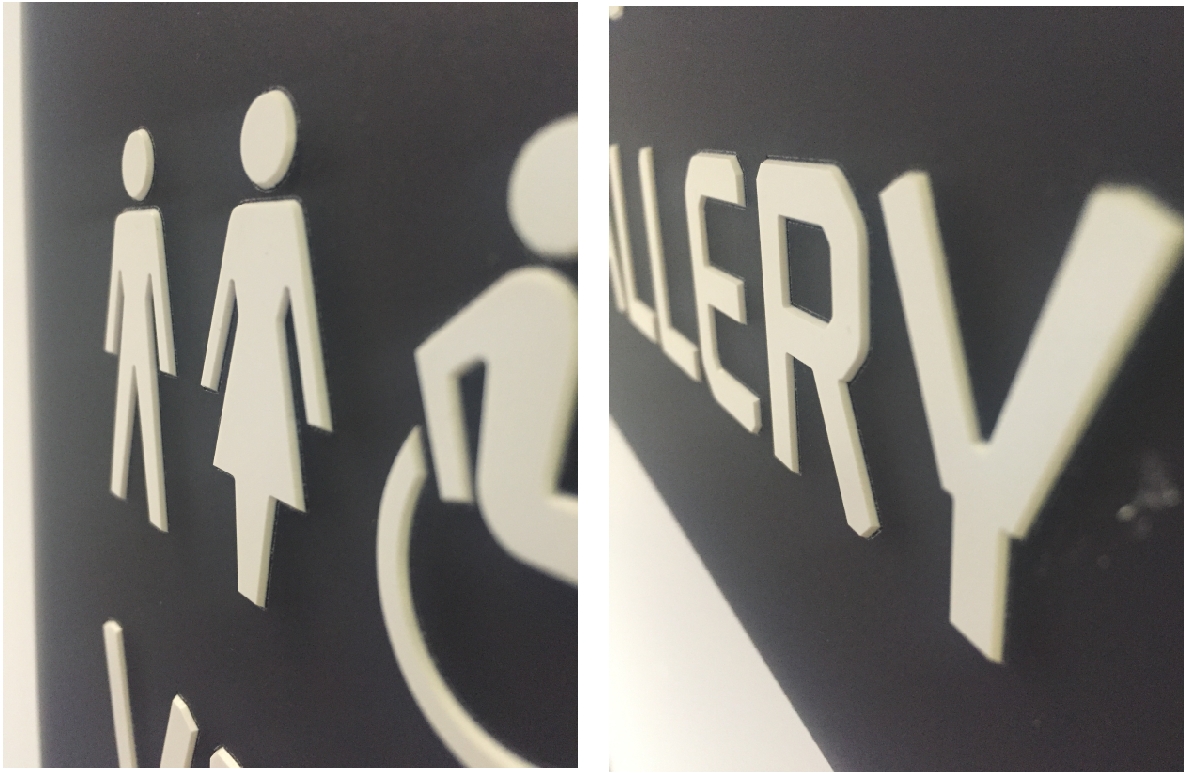-
How do you think this sign is made?
Hi All
Saw these internal way finding signs today and couldn’t immediately fathom how exactly they were done, the finish was excellent and we’d like to have a play making something similar. The backing panel is 5mm frosted acrylic with 1mm thick embossed opaque matte white text/icons to the face. For reference the caps height of the text is 35mm and icons are 50mm tall.
My queries are:-
What do you think the white material is? I’m not aware of 1mm thick white acrylic being available although it did appear to have the same density and hardness. Someone has suggested high impact polystyrene – any thoughts?
The white text/icons have very slightly chamfered edges – due to the 1mm thickness of the material and the sharpness of the internal corners I can’t see how this could be CNC routed? Second thought is laser cut – but wouldn’t that give 90 degree perpendicular edges rather than chamfered? The edges did appear to have a glossier finish whereas the material face was matte. I’m completely puzzled – what do you think?
What’s the purpose of the ‘engraved outline’ in the backing acrylic? (You can just see it around the letter shapes). First thought is that is it’s just an outline (CNC’d or lasered) to align the white text to when bonding them together, however, the text is so perfectly positioned within these outlines it’s almost as if the white was somehow cut in situ on the backing acrylic. Other thought is that it’s not an outline but the whole of each letter shape is slightly recessed / routed out and the letter sits and locates into this? That would help with positioning them and gluing them in? (but would take so much longer to make)
How do you think they are bonded? The entire perimeter of everything is exceptionally well bonded to the backing and there isn’t the slightest hint of a gap or edge to the text that could be lifted. There isn’t the slightest hint of chloroform or any other glues – no errant drops, glue spread / bleed around the letters (into the engraved outline).
My overall best guess on this is:-
The 5mm backing acrylic is laser cut and the outlines of the letters are laser engraved fractionally larger than the white letters.
The white material is flooded with double sided adhesive film/tape to one side and is laser cut. (Perhaps the slightly chamfered edges aren’t "designed” as such but just a consequence of cutting this specific material with a laser)
The letters and icons are manually applied with the double sided film/tape – using the laser engraved guidelines (to a very neat and accurate standard).
All thoughts welcome – I won’t sleep until I know how to achieve this effect!!
Cheers
Macky
Log in to reply.



